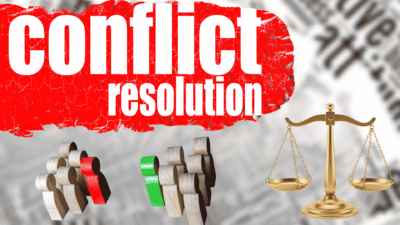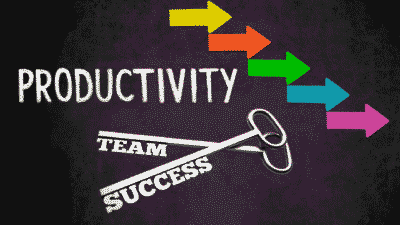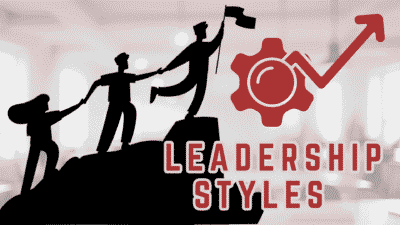What if the most significant barrier to your organization’s growth is not the market, but an invisible friction within its own walls? Consider that 45% of employees state a lack of trust in leadership is the single biggest issue impacting their work performance. This isn’t just a number; it’s a silent crisis unfolding in workplaces worldwide. For leaders at the intermediate level, mastering the art of creating teams built on trust is no longer a soft skill—it is the foundational element of high performance, innovation, and stability. This guide moves beyond theory to provide you with the practical, actionable steps needed to construct a culture where trust is not just a value on a poster, but the very mechanism of how work gets done. The first step? Understanding that you, as a leader, lay the first stone by modeling the behavior you expect. A quick, actionable win is to start your next team meeting by openly acknowledging a small, recent mistake you made and what you learned from it. This simple act of vulnerability creates a powerful ripple of psychological safety.
1. The Unseen Architecture: What Are Teams Built on Trust?
Before you can build, you must understand the blueprint. Teams built on trust operate on a shared belief that every member can rely on the integrity, ability, and character of others. It’s the confidence that allows for vulnerability without fear of negative consequences.
1.1 Beyond Buzzwords: Defining Trust in a Professional Context
In the workplace, trust is not about blind faith. It is a calculated assessment based on consistent experience. It means your team members believe you will do what you say you will do and that you have their best interests at heart. It manifests in several key ways:
- Reliability and Consistency: Team members predictably follow through on commitments. Your words and actions are aligned, creating a dependable environment.
- Competence: There is a shared confidence in each other’s skills and abilities to perform their roles effectively. You trust that your colleagues have the knowledge to do their jobs well.
- Integrity: This is the cornerstone. It’s the belief that your team members and leaders operate from a place of honesty and strong principles. It involves giving credit where it’s due and taking responsibility for mistakes.
- Open Communication: Team members feel safe enough to share ideas, offer constructive feedback, and voice concerns without fear of punishment or humiliation.
1.2 The Tangible Costs of a Low-Trust Environment
When trust is absent, the consequences are severe and measurable. A low-trust culture doesn’t just feel bad; it performs poorly. The costs include:
- Reduced Productivity: A meta-analysis drawing from over 7,700 teams confirmed a direct positive relationship between how much team members trust one another and the achievement of team goals. Without trust, teams get bogged down in politics and self-preservation, not performance.
- High Employee Turnover: High-trust companies have half the employee turnover of their low-trust counterparts.
- Replacing an employee is expensive, involving recruitment, onboarding, and lost productivity costs that can amount to one-half to two times the employee’s annual salary.
- Stifled Innovation: Innovation requires risk-taking. If team members fear blame for failed experiments, they will stop taking creative risks altogether, leading to stagnation.
- Increased Stress and Burnout: A Harvard Business Review study found that employees who trust their leaders experience less stress and burnout, have more energy, and are more satisfied with their lives.
2. The Leader’s Role: How to Lay the First Stone
Trust in a team often begins and ends with its leader. Your behavior sets the standard. To cultivate teams built on trust, you must intentionally model the conduct you wish to see.
2.1 Show Vulnerability, While Maintaining Credibility
Many leaders believe they must project an image of infallible strength. However, true strength lies in authenticity. Admitting when you don’t have the answer or acknowledging a mistake does not undermine your authority; it humanizes you and makes you more relatable.
- How to do it: Instead of pretending to know everything, say, “That’s a great question. I’m not sure what the answer is, but I’ll find out and get back to you.” When a project goes off track due to your decision, openly state, “My initial approach was not the best one. Here is what I learned, and here is how we are going to correct it.” This approach transforms failures into learning opportunities for everyone.
2.2 The Power of Predictability and Consistency
Your team needs to know they can count on you. Consistency in your actions, decisions, and mood creates a stable environment where people feel secure. If your team is constantly guessing how you will react, they will spend more energy managing you than doing their work.
- How to do it: Apply rules and standards fairly to everyone on the team. Avoid showing favoritism. Align your words with your actions; if you promise to review a document by a certain day, make sure you do it. This consistent, dependable behavior is a key pillar for building trust.
3. Practical Blueprints for Building Trust
With the foundation laid, you can now implement specific structures and processes to reinforce a culture of trust. These are the daily habits and systems that make trust tangible.
3.1 Foster Psychological Safety: The Freedom to Fail
Psychological safety is the shared belief that the team is safe for interpersonal risk-taking. It means people feel comfortable speaking up, sharing ideas, and admitting mistakes without being embarrassed or punished
- How to do it:
- Frame Work as a Learning Process: Remind the team that in a complex field, not every project will be a success. Emphasize that the goal is learning and continuous improvement, which requires experimentation.
- Respond Productively to Errors: When someone makes a mistake, focus the conversation on solutions, not blame. Ask questions like, “What can we learn from this?” and “How can we prevent this from happening again?” This approach encourages accountability rather than fear.
- Model Curiosity: Actively ask questions and invite input from all team members, especially quieter ones.Statements like, “Javier, I haven’t heard from you yet and would value your perspective,” can create space for more voices to be heard.
3.2 Communicate with Clarity and Purpose
Transparent communication is a powerful trust-builder. When employees understand the “why” behind decisions and feel informed about the organization’s direction, they feel more secure and valued.
- How to do it:
- Share Information Openly: Don’t withhold information unnecessarily. Be transparent about team goals, challenges, and successes. This doesn’t mean sharing confidential information, but rather providing the context your team needs to do their jobs effectively.
- Explain Your Decisions: When you make a decision that affects the team, explain the reasoning behind it. This helps the team understand your thought process and shows respect for their involvement.
- Encourage a Two-Way Dialogue: Communication should not be a one-way street. Create regular opportunities for your team to ask questions and provide feedback, such as through weekly check-ins or anonymous suggestion channels.
3.3 Delegate Responsibility, Not Just Tasks
Micromanagement is a direct signal of distrust. It tells your team members that you don’t believe in their ability to handle their work independently. To build trust, you must empower your team by delegating full ownership of projects.
- How to do it: Instead of assigning a series of small, disconnected tasks, give a team member full responsibility for an outcome. Provide them with the necessary resources and clear objectives, but then step back and let them determine how to achieve the goal. Offer your support and be available for guidance, but resist the urge to dictate every step. This demonstrates your confidence in their abilities and fosters a sense of accountability and pride.
A Short Story: The Case of the Overlooked Project
Amara was a mid-level manager at a logistics firm. Her team was competent, but morale was low. She noticed they rarely took initiative, always waiting for her explicit instructions. She delegated tasks meticulously, but never true responsibility. One day, a critical but non-urgent project to streamline their internal reporting system kept getting pushed aside.
Frustrated, Amara decided to try a new approach. She called in Kenji, a quiet but detail-oriented analyst on her team. Instead of giving him a list of tasks, she said, “Kenji, our reporting process is inefficient. I want you to lead the effort to fix it. You have full ownership. Define the problem, propose a solution, and manage its implementation. The budget is $5,000, and the deadline is next quarter. I am here to support you, but this is your project.”
Kenji was initially hesitant, but then he embraced the challenge. He interviewed colleagues, researched software, and presented a well-thought-out plan. He made a few small mistakes along the way, which Amara helped him navigate without taking over. Three months later, Kenji unveiled a new system that saved the team 10 hours of work per week. More importantly, the entire team’s dynamic had shifted. Seeing Kenji trusted and empowered, other team members began to step up, proposing their own ideas. Amara learned that by giving trust, she received engagement and innovation in return.
4. Common Pitfalls That Erode Trust (And How to Avoid Them)
Building trust is a slow process, but destroying it can happen in an instant. Being aware of common trust-destroying behaviors is critical for any leader.
4.1 Failing to Take Responsibility for Errors
A leader who blames others for mistakes or problems creates a toxic culture of fear. To build trust, you must take ownership when things go wrong, especially when the failure is yours.
- How to avoid it: When you make a mistake, own it publicly and without excuses. This sets a powerful example that it is safe for others to do the same. A leader’s willingness to accept responsibility demonstrates integrity and builds credibility.
4.2 Overlooking Recognition and Growth
Failing to acknowledge achievements or invest in your team’s development sends a message that you do not value them.Trust grows when people feel seen, appreciated, and supported in their professional journey.
- How to avoid it:
- Recognize Contributions: Make recognition a regular habit. Celebrate both big wins and small successes. A simple, specific “thank you” can have a significant impact.
- Invest in Development: Have conversations with your team members about their career aspirations. Provide them with opportunities to learn new skills, take on challenging assignments, or attend relevant training. This shows you are invested in their future, not just their current output.
4.3 Inconsistent Actions and Messages
Saying one thing and doing another is one of the fastest ways to erode trust. For example, if you publicly praise the importance of work-life balance but consistently send emails late at night, your actions contradict your words.
- How to avoid it: Before making a commitment, be sure you can follow through. Conduct a personal audit to ensure your actions are aligned with the values you communicate. Your team will trust what you do far more than what you say.
Conclusion
Creating teams built on trust is not a passive activity or a one-time initiative. It is an ongoing, intentional process of cultivating an environment where people feel safe, valued, and empowered. It begins with your commitment as a leader to be consistent, transparent, and vulnerable. By focusing on psychological safety, clear communication, and genuine empowerment, you can transform your team’s culture from one of fear and self-preservation to one of collaboration and high performance. The startling statistic from the beginning—that a lack of trust is a primary barrier to performance—does not have to be your team’s reality. Instead, you can build a workplace where trust is the invisible force that propels everyone forward, unlocking potential you never thought possible.
Frequently Asked Questions (FAQ)
- What is the first step a leader should take to build trust?
The first and most crucial step is to lead by example. Leaders must model trustworthy behavior, which includes being consistent in their words and actions, communicating openly and honestly, and taking responsibility for their own mistakes. - How can you rebuild trust after it has been broken?
Rebuilding trust requires acknowledging the mistake, listening to the affected parties to understand the impact, and offering a sincere apology. Following this, you must demonstrate changed behavior over time. Consistent, trustworthy actions are the only way to genuinely repair a breach of trust. - What is psychological safety and why is it important for trust?
Psychological safety is a shared belief that team members can take interpersonal risks, such as speaking up with ideas or admitting mistakes, without fear of being punished or humiliated. It is the foundation of trust because it creates the secure environment necessary for open communication and vulnerability. - How does micromanagement affect trust?
Micromanagement destroys trust because it signals a lack of confidence in a team member’s abilities. It stifles autonomy, reduces motivation, and makes employees feel devalued, leading to disengagement and a reluctance to take initiative. - Can trust be built in a remote or hybrid team?
Yes, but it requires more intentional effort. Leaders in remote settings must prioritize clear and frequent communication, create virtual spaces for informal interaction, and be explicit in showing they trust employees to manage their work without constant supervision. - What is the role of transparency in building trust?
Transparency is vital. It involves sharing information openly and explaining the “why” behind decisions. When employees are kept informed, it reduces uncertainty, builds credibility, and makes them feel like valued partners in the organization’s mission. - How long does it take to build a high-trust culture?
Building a high-trust culture is a long-term commitment, not a short-term project. While small improvements can be seen quickly, creating a deeply embedded culture of trust can take months or even years of consistent effort and reinforcement.
references
Warning: The provided links lead only to the specified content. Other areas of those sites may contain material that conflicts with some beliefs or ethics. Please view only the intended page. Note: The source links are available in English only.
- Journal of Applied Psychology 2016 Authors: Bart A. de Jong, Kurt T. Dirks, Nicole Gillespie Trust and Team Performance: A Meta-Analysis of Main Effects, Moderators, and Covariates.
Shows intrateam trust correlates strongly with team performance across ~7,700 teams. - Academy of Management Proceedings 2017 Authors: Kurt T. Dirks, Donald L. Ferrin The Effects of Trust in Leadership on Employee Performance, Behavior, and Attitudes: A Meta-Analysis.
Links leadership trust to job satisfaction, organizational commitment, and turnover intention. - Nankai Business Review International 2020 Authors: Su, T. S., Chen, C., Cui, X., Yang, C., Ma, W. Consistency at Different Levels: A Meta-Analytic Examination of Organizational Trust and Performance.
Demonstrates trust’s positive impact on performance at individual, team, and organizational levels. - Deloitte / The Wall Street Journal ~2024 — no single author listed Trust: Increasingly Hard to Win, Easier Than Ever to Lose.
Survey-based findings about employee trust in leadership, showing significant trust deficits.







